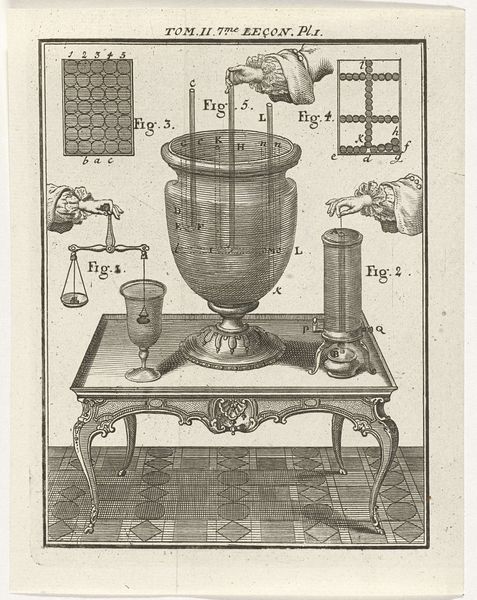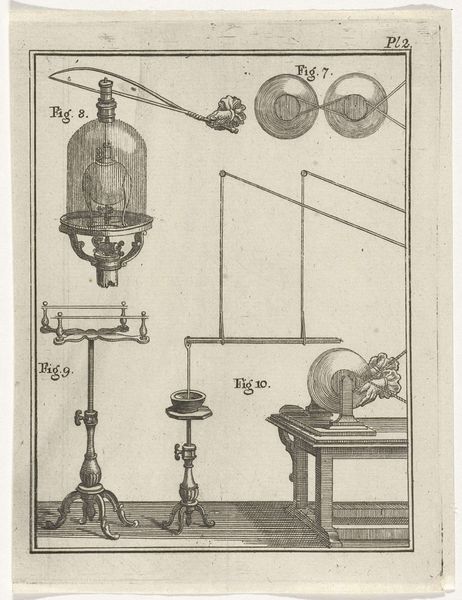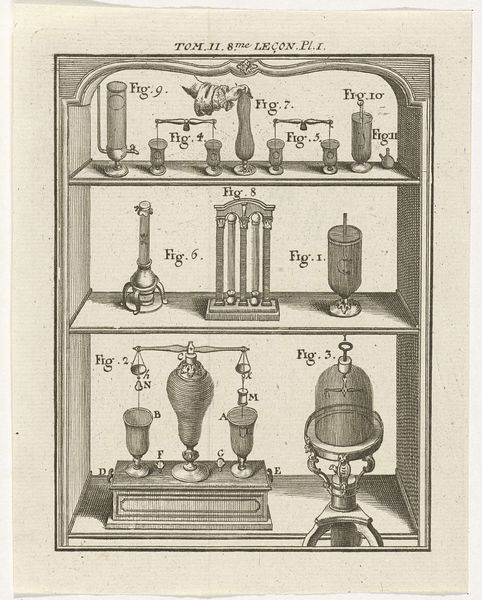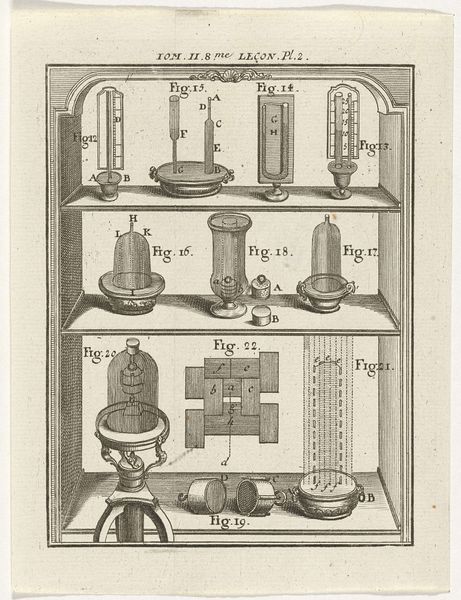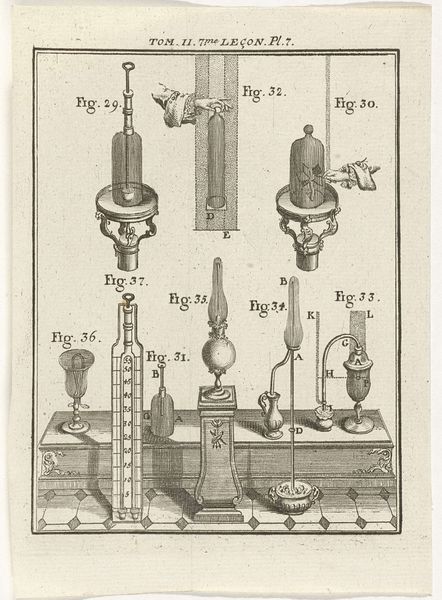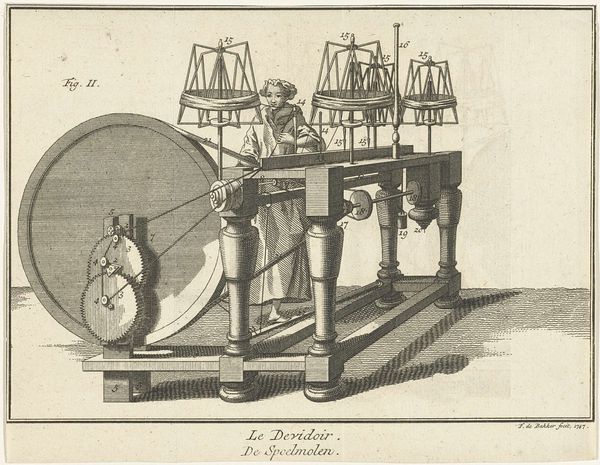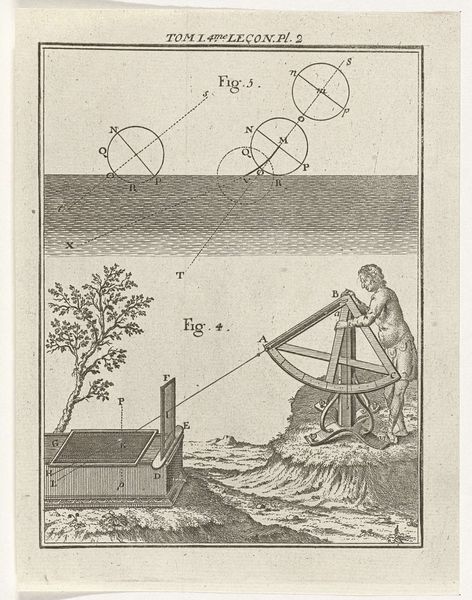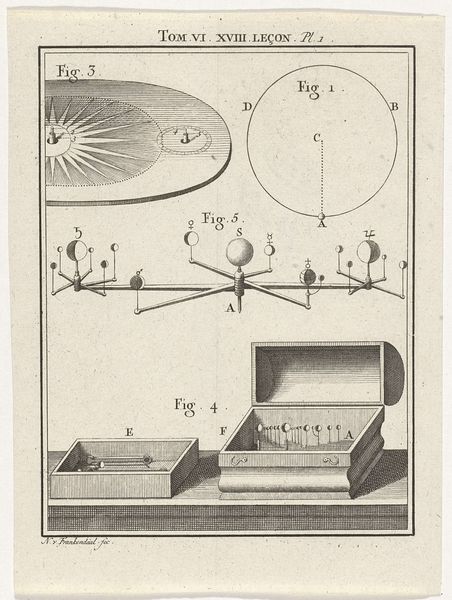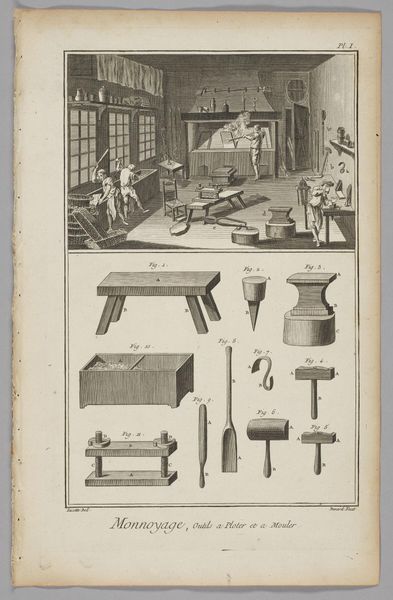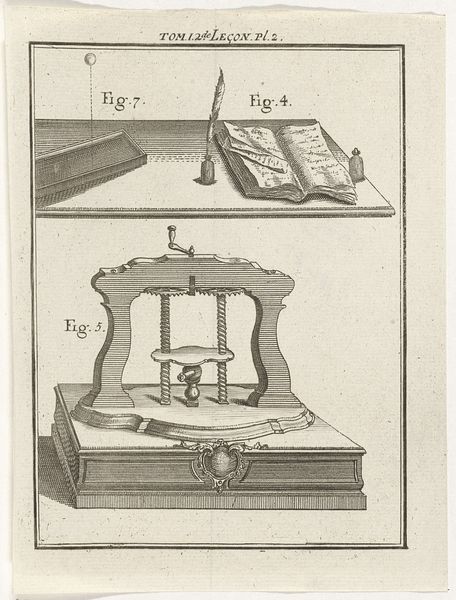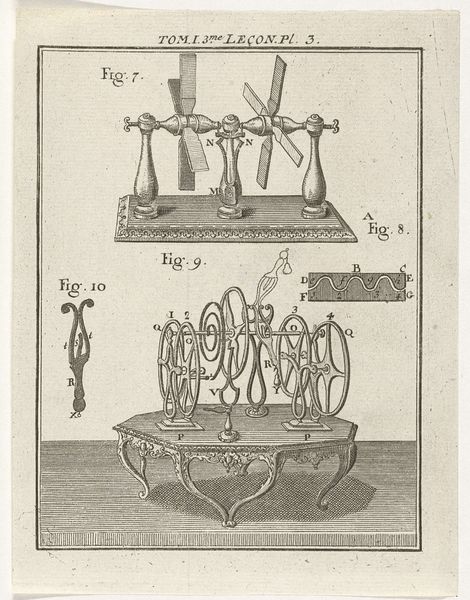
graphic-art, print, engraving
#
graphic-art
#
baroque
# print
#
old engraving style
#
traditional media
#
figuration
#
geometric
#
history-painting
#
engraving
Dimensions: height 165 mm, width 121 mm
Copyright: Rijks Museum: Open Domain
Curator: Good morning. We are standing before a print entitled "Natuurkundige instrumenten en modellen," or "Physics Instruments and Models" by Nicolaas van Frankendaal, created in 1759. Editor: It feels like peering into the nascent age of scientific exploration, doesn’t it? The etching is precise, almost clinical. There's a stark clarity in how each tool is rendered. Curator: Precisely. As a Baroque engraving, it participates in the era's burgeoning interest in documenting and disseminating scientific knowledge. Prints like this were vital for sharing discoveries. Editor: Tell me more. Curator: Well, prints such as this one provided the scientific community, as well as a broader learned audience, with meticulously depicted instruments and models for experiments. The lines delineate the contours of devices designed to measure and observe the physical world. Editor: And I think that’s part of its aesthetic appeal: this striving for objective representation. How the print emphasizes the relationship between these devices is a real testament to Baroque fascination with order and observation. Each device is isolated but clearly situated within an understandable functional ecosystem. Curator: I would add that while order and legibility were key, these images, because they were disseminated via printing, contributed to the creation of a visual culture surrounding science. Consider the social implications; it wasn’t just about understanding science, but presenting its tools to an educated public. Editor: It democratized scientific inquiry, to a certain degree. The very act of representing and distributing knowledge embodies an enlightenment ideal: that information belongs to all. The composition guides you systematically across each tool. Curator: Yes. And there's something quietly powerful about how art and science converge. This engraving not only documents instruments but implicitly comments on the period’s view on truth-seeking, evidence, and objective knowledge. Editor: It's amazing to see, still compelling after so many years. It highlights that intersection between scientific advancement and our quest to categorize and analyze the world around us. Curator: Indeed. An object lesson, you might say.
Comments
No comments
Be the first to comment and join the conversation on the ultimate creative platform.
